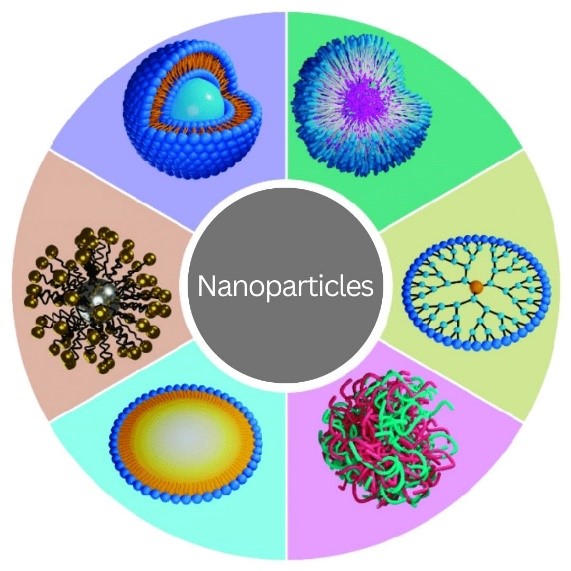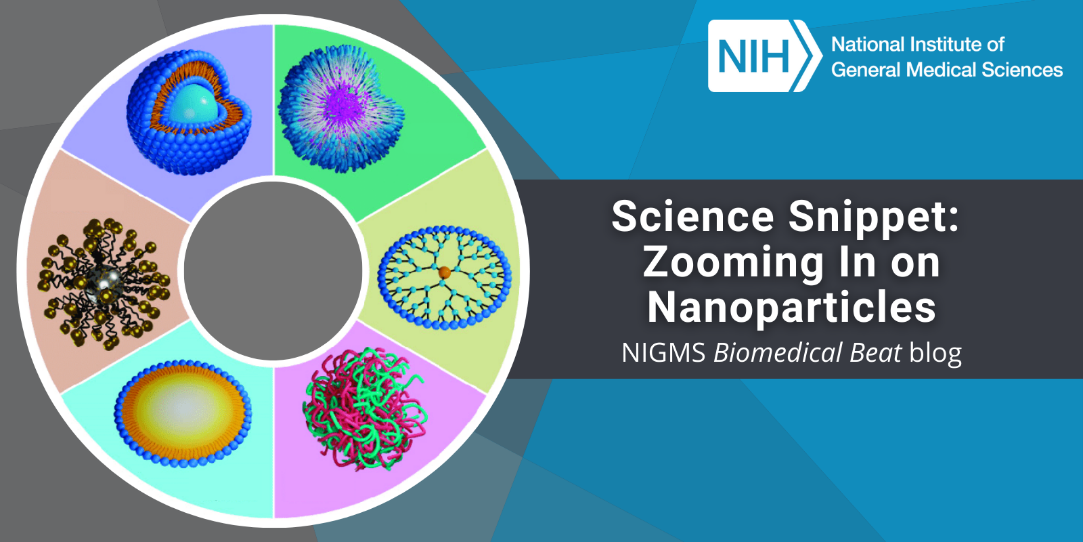
Nanoparticles may sound like gadgets from a science fiction movie, but they exist in real life. They’re particles of any material that are less than 100 nanometers (one-billionth of a meter) in all dimensions. Nanoparticles appear in nature, and humans have, mostly unknowingly, used them since ancient times. For example, hair dyeing in ancient Egypt involved lead sulfite nanoparticles, and artisans in the Middle Ages added gold and silver nanoparticles to stained-glass windows. Over the past several decades, researchers have studied nanoparticles for their potential uses in many fields, from computer engineering to biology.
A nanoparticle’s properties can differ significantly from those of larger pieces of the same material. Properties that may change include:
- Strength
- Chemical reactivity
- Heat or electrical conductivity
- Reflectiveness
- Color
- Magnetism
Scientists can fine-tune these properties by adjusting the size of the particles.
Biomedical Benefits
Nanoparticles caught the interest of biomedical scientists in part because many cell components are nanoscale in size. For example, DNA is about 2 nanometers wide, and the protein in red blood cells that carries oxygen throughout our bodies is roughly 5.5 nanometers wide. A human hair is massive in comparison, with a width of about 80,000 to 100,000 nanometers.
Researchers have developed dozens of medicines that use nanoparticles and that the U.S. Food and Drug Administration has approved. As drug delivery systems, nanoparticles can help medicines target specific sites in the body and/or control their release over time, both of which can help reduce the risk of negative side effects.
Many of the currently approved medicines that use nanoparticles are used to treat cancer. These treatments are often highly toxic, and encasing them in nanoparticles can help reduce their harm to healthy cells. Uses for other nanoparticle medicines range from treating iron deficiency to fighting fungal infections. Even some COVID-19 vaccines use nanoparticles made of lipids to protect their mRNA cargo and help it pass through cell membranes.
Scientists have also developed nanoparticles that act as sensors. These sensors can detect various molecules during research or be used in medical tests, such as those for infections, pregnancy, or blood-sugar levels.
Check out the video below to learn how nanoparticles made of nucleic acids could help control immune responses.
NIGMS-Funded Research
NIGMS supports many scientists working with nanoparticles. Some of these researchers are:
- Investigating nanoparticle carriers for new RNA-based cancer treatments
- Exploring how nanoparticles interact with different biological systems to improve development of future nanotherapies
- Developing nanoparticles to stop the accumulation of a protein associated with type 2 diabetes
- Designing new nanoparticle-based imaging techniques that could help improve contrast in X-ray and electron microscopy images and identify individual cells of rare types, which could support disease diagnosis
- Studying how silver nanoparticles might be used to fight antibiotic-resistant bacteria
Learn about other scientific terms with the NIGMS glossary.







